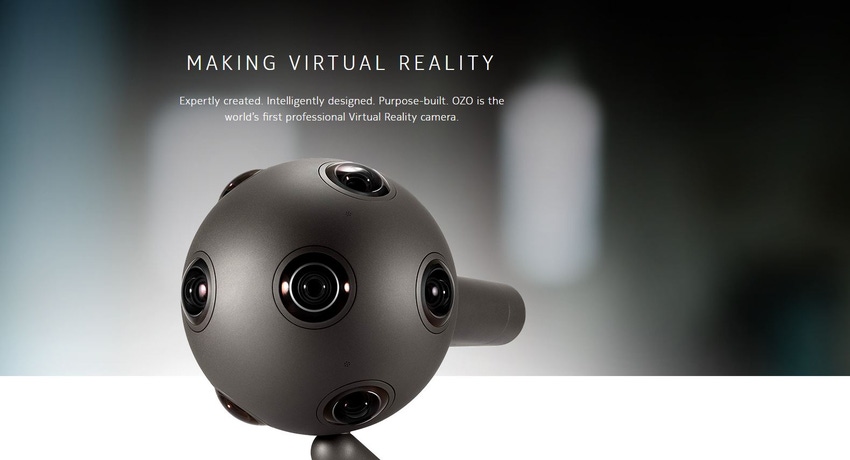Nokia adds to growing VR momentum with OZO program launch
The momentum behind VR continues to gather apace as Nokia Technologies threw its hat into the ring with the launch of a new content developer’s program.
March 18, 2016

The momentum behind VR continues to gather apace as Nokia Technologies threw its hat into the ring with the launch of a new content developer’s program.
Using the OZO virtual reality camera (above), which Nokia claims is the world’s first professional camera purpose-built for VR, participants of the OZO Pioneer Program have been tasked with creating compelling one minute demo clips. The point, Nokia says, is to demonstrate the possibilities of VR.
Paul Melin, VP of Digital Media at Nokia Technologies says VR is going to be an unstoppable wave for the future of content, and the programme is in aid of driving the development of the tech.
“Virtual Reality is the next frontier in storytelling, and OZO is designed to provide professional content creators with an innovative solution to produce great VR experiences,” he said. “Nokia wants to help drive the creation of content that demonstrates the possibilities of this medium in collaboration with innovators at the cutting edge of VR production, and the Pioneer Program is designed to tap into the full creativity of the VR community.”
Participation isn’t open to just anyone, however. Nokia’s offering a $15,000 discount off the cost of the OZO camera; while significant, this amounts to just 25% off the possibly prohibitive $60k price tag.

The Telecoms.com Team Got Its Hands On Some Vr Gear At Samsung’S Launch Event At Mwc 2016.
The use-cases of VR are expanding and Mobile World Congress last month was flooded with talk of virtual reality gaming, movies and immersive experiences. The launch event for the Samsung Galaxy S7 had virtual reality headsets strewn upon every chair in the auditorium as VR video content featured heavily during the presentation. SK Telecom, HTC, Gemalto et al were all a part of the VR crew demonstrating the potential of the tech.
Earlier this week Qualcomm announced a new VR-based SDK (software development kit) aimed at the creation of VR-gaming based on the newest iteration of its Snapdragon processor, the 820. Sony, meanwhile, has announced the September launch of its Playstation VR – a $400 companion to the popular PS4 gaming console. Sky also joined the VR crowd with the announcement of a dedicated VR studio and two films shot during Formula 1 testing in Barcelona.
From a variety of industries the momentum appears unstoppable, but questions remain over the long term desirability of VR going forward. The disconnect between senses is a big hurdle to creating completely immersive virtual entertainment. As it stands, the lack of sensory tactility and physiological response to visual stimuli leaves many feeling motion sick or disoriented. At consumer level there’s a common perception that VR as it exists today is a bit of a fad with little desirability in the demographic beyond early adopters of new technology.
The telecoms industry, including handset manufacturers, telcos, app designers and content developers will need to consider how to make the technology accessible, convenient and entertaining at a compelling price point.
About the Author(s)
You May Also Like








.png?width=300&auto=webp&quality=80&disable=upscale)


_1.jpg?width=300&auto=webp&quality=80&disable=upscale)


.png?width=800&auto=webp&quality=80&disable=upscale)